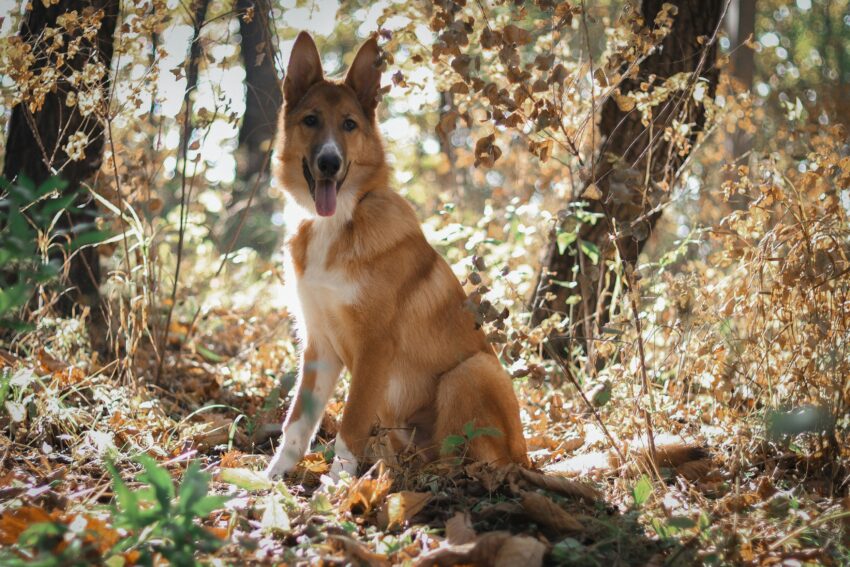As we head into the week before Thanksgiving—a time when many of us are juggling travel plans, grocery lists, and a surprising number of pie debates—I’m reminded daily of how much joy (and chaos) comes from sharing life with more than one dog.
One of the greatest gifts of living with multiple pups is witnessing their distinct personalities—yes, their dognalities—and seeing the world through their wonderfully different viewpoints. In my home, Rio and Deuce couldn’t be more opposite, and that contrast keeps our days lively.
Rio, now fully recovered after months of restricted mobility, has burst back into life with her trademark gusto. Her bigger-than-life spirit has returned in full force, and I adore it. She reminds me constantly of humor, resilience, and the simple pleasures that ground us—something especially welcome during the pre-holiday rush.
But every character has a quirk, and Rio’s signature move is her dramatic dash through the front door. Thankfully, we’re fenced in, so safety isn’t the issue—but the performance certainly is. She bursts out with a set of piercing barks that I’m sure my very-distant neighbor would prefer to skip. And just when we think the theatrics have peaked, out comes phase two: she spins around, marches up to poor Deuce, and pecks him on the face or tugs his ear as if to declare, “Come on! Adventure awaits! Bunnies! Jack the neighbor dog! LET’S MOVE!”
Deuce, ever the gentleman, often just stands there, tolerating her antics like an older brother who knows resistance is futile. Occasionally he hesitates at the door—understandably—and on some days, he joins her sprint with youthful enthusiasm he probably regrets later.
This is where my philosophy comes in: when one dog consistently gets the short end of the stick, it’s time for the humans to intercede. Rio means no harm, but that doesn’t mean Deuce should endure a daily wrestling match at the doorway.
While Rio was still recovering and going outside on a leash, we began introducing a simple training strategy to reshape the routine. It went like this:
We’d open the front door, knowing the script—Rio barks, turns to grab Deuce, and off they go. But now, the moment she let out that sharp bark, I calmly said, “Ah, too bad.” This is our familiar non-reward marker: a gentle signal that she just lost access to the thing she wants—the reinforcer, which in this case is going outside.
Immediately, back inside she went.
A brief pause.
And then: “Try again.”
If she stepped out quietly and resisted the urge to round up her brother, she earned her freedom. If not? We reset and repeated.
Rio didn’t earn the title of my “one-trial dog” for nothing. She catches on quickly. It took only a handful of repetitions for her to understand that barking and pestering Deuce meant losing access to the adventure, while calmer behavior opened the door—literally.
A few days later, she graduated back to off-leash romping. I opened the door with holiday-season glee, and out she flew—harness gone, freedom restored. And when the old habit resurfaced? Back to the plan. With just four trials, she made the connection and raced into her day without disturbing Deuce or the neighborhood.
This brings us to one of the most important principles in dog behavior—a principle that becomes especially useful with the added excitement, visitors, and schedule shifts of Thanksgiving week:
Behavior is shaped by consequences, not commands.
And consequences must be immediate and consistent.
This is why scolding a dog after the fact—especially minutes or hours later—is ineffective and unfair. They cannot connect the feedback to the original behavior. But when the consequence is clear, consistent, and timely, dogs quickly learn what leads to success and what does not.
When consequences are inconsistent—rewarded sometimes, stopped sometimes—the behavior actually becomes stronger, much like a gambler who keeps playing because the next win might be coming. It’s a universal principle that applies across species and across casinos.
What I love most about using thoughtful, timely consequences is that it naturally opens the door (sometimes literally) for dogs to learn which alternative behaviors are desirable. That clarity is a gift to them—and to us.
And with that, once training is done, we can all get back to the important things in life: chasing imaginary rabbits, barking at our friend Jack, and returning to that half-finished pre-Thanksgiving cup of coffee sitting on the kitchen table.

